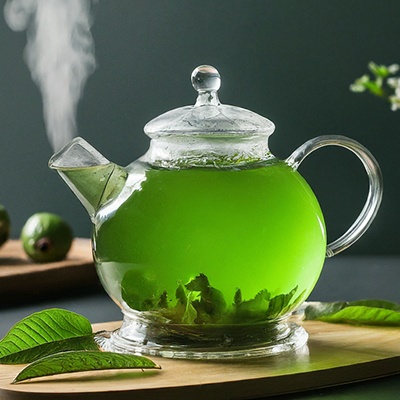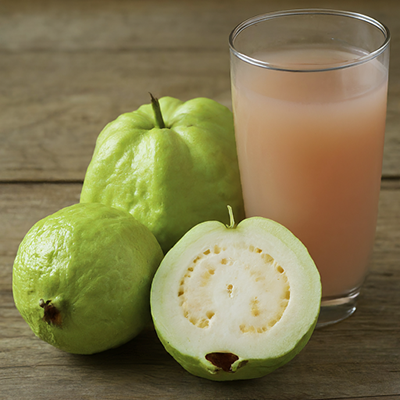The guava tree is an aromatic tree that native Mexicans cultivated before the Spaniards arrived. Guava is one of the richest fruits in vitamin C; some varieties have five times the amount of oranges.

Guava Tree Scientific Facts
- Scientific Name – Psidium guajaba L.
- French – Goyavier.
- Spanish – Guayabo.
- Environment—Native to tropical areas of America, from Mexico to Brazil, this tree is currently cultivated in hot climate zones of America, Africa, and Asia.
- Description – Tree of the Myrtaceae family, growing up to six meters high, with smooth, dun-colored bark, elliptical, opposed leaves, white flowers, and fleshy round fruit with white or pink flesh.
- Parts of the plant used medicinally – The leaves, the fruit, and the root bark.
Healing Properties

The guava tree LEAVES and root BARK contain many tannin-type substances. In Central America, this plant has been used for ages to fight diarrhea and dysentery. When locally applied as mouth rinsings and gargles, its decoction is also helpful for stomatitis (inflammation of the mouth mucosa) and pharyngitis.

Its FRUIT contains mucilage, pectin, small amounts of protein and fat, minerals (mainly potassium, calcium, iron, and phosphorus), and vitamins A, B, and C. They have antiscorbutic, remineralizer, and invigorating properties. Its use is especially recommended for physical exhaustion, malnutrition, or weakness. They also have a mild laxative effect.
How to use Guava Tree
- Decoction with 50 grams of leaves and root bark per liter of water. Drink a cup every four hours until diarrhea stops.
- Fruit is eaten fresh, in jelly, or marmalades.
- Oral rinses and gargles with the same decoction are internally used.
DISCLAIMER: All content on this website is presented solely for educational and informational objectives. Do not rely on the information provided as a replacement for advice, diagnosis, or treatment from a qualified medical expert. If you are pregnant, nursing, or have any preexisting medical concerns, talk to your doctor before using any herbal or natural medicines.
REFERENCES
- George D. Pamplona-Roger, M.D. “Encyclopedia of Medicinal Plants.” George D. Pamplona-Roger, M.D. Encyclopedia of Medicinal Plants. Ed. Francesc X. Gelabert. vols. 2 San Fernando de Henares: Editorial Safeliz, 2000. 522. Print.
- WebMD: https://www.webmd.com/diet/health-benefits-guava
- PharmEasy Blog: https://pharmeasy.in/blog/guava-fruit-benefits-amazing-uses-of-guava-leaves
